- Choosing the Right Fertilizer
- 1. Nutrient Content
- 2. Slow-Release vs. Water-Soluble Fertilizers
- 3. Organic vs. Synthetic Fertilizers
- 4. pH Level
- 5. Application Method
- 6. Organic Matter
- 7. Dosage and Frequency
- Consider Nutrient Needs
- Nitrogen
- Phosphorus
- Potassium
- Micronutrients
- Fertilizer Formulation
- Organic vs. Synthetic Fertilizers
- Organic Fertilizers
- Synthetic Fertilizers
- Choosing the Right Fertilizer
- Applying Fertilizer Correctly
- 1. Choose the right fertilizer
- 2. Read the instructions
- 3. Start with a diluted solution
- 4. Apply evenly
- 5. Avoid direct contact with the stem
- 6. Water after fertilizing
- 7. Follow a feeding schedule
- 8. Monitor the plants
- 9. Keep records
- Timing and Frequency
- Proper Application Techniques
- 1. Start with a Properly Prepared Soil
- 2. Use the Right Type of Fertilizer
- 3. Apply Fertilizer in the Right Amount
- 4. Distribute Fertilizer Evenly
- 5. Water the Soil After Application
- 6. Monitor the Seedlings
- 7. Maintain a Regular Fertilization Schedule
- Understanding Nutrient Deficiencies
- Common Nutrient Deficiencies
- Diagnosing Nutrient Deficiencies
- Preventing and Treating Nutrient Deficiencies
- Identifying Common Symptoms
- 1. Yellowing Leaves
- 2. Stunted Growth
- 3. Small Fruits or Blossom Drop
- 4. Brown or Spotted Leaves
- 5. Wilting or Drooping Leaves
- Addressing Nutrient Imbalances
- 1. Nitrogen (N) Deficiency
- 2. Phosphorus (P) Deficiency
- 3. Potassium (K) Deficiency
- 4. Calcium (Ca) Deficiency
- 5. Magnesium (Mg) Deficiency
- 6. Iron (Fe) Deficiency
- 7. Micronutrient Imbalance
- “Question-Answer”
- How often should I fertilize pepper and aubergine seedlings?
- What type of fertilizer is best for pepper and aubergine seedlings?
- Can I use organic fertilizer for pepper and aubergine seedlings?
- Should I apply foliar feeding to pepper and aubergine seedlings?
- What signs should I look for to know if my seedlings need fertilizer?
- Are there any specific watering requirements for fertilized seedlings?
- Can I create my own homemade fertilizer for pepper and aubergine seedlings?
- “Video” Fertilizing Pepper Plants
Growing peppers and aubergines from seedlings can be a rewarding experience, but it requires careful attention to their nutritional needs. Feeding seedlings with the right fertilizers and at the right time is crucial for their healthy growth and development. By understanding the best fertilization techniques, you can ensure that your pepper and aubergine seedlings have the nutrients they need to thrive.
One important tip for feeding seedlings is to use a balanced fertilizer that provides a mix of essential nutrients. This can be achieved by using a slow-release fertilizer or by using a liquid fertilizer mixed with water. It’s important to choose a fertilizer that is specifically formulated for seedlings, as they have different nutritional needs compared to mature plants.
Timing is another crucial factor when it comes to fertilizing seedlings. It’s important to wait until the seedlings have developed their true leaves before starting to feed them. This usually happens around two to three weeks after germination. Feeding seedlings too early can cause root burn and interfere with their overall growth.
In addition to providing the right nutrients, it’s also important to consider the frequency of fertilization. Feeding seedlings once every two weeks is generally sufficient, but this can vary depending on the specific fertilizer used and the growth rate of the seedlings. It’s important to monitor the seedlings closely and adjust the feeding schedule as needed.
By following these essential tips for feeding pepper and aubergine seedlings, you can ensure that they receive the necessary nutrients for healthy growth. Remember to choose a balanced fertilizer, wait until the seedlings have developed their true leaves, and provide fertilization at the appropriate frequency. With proper care, your seedlings will grow into strong and productive plants, ready for transplanting into your garden.
Choosing the Right Fertilizer
Choosing the right fertilizer for your pepper and aubergine seedlings is essential for their growth and development. Here are some factors to consider when selecting a fertilizer:
1. Nutrient Content
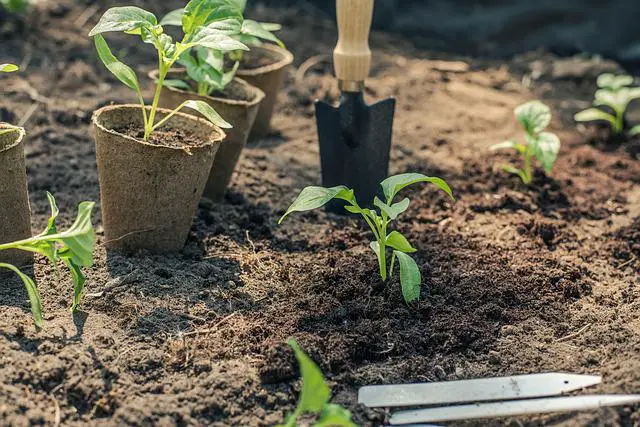
The nutrient content of fertilizers is usually indicated by the three numbers on the packaging, representing the percentages of nitrogen (N), phosphorus (P), and potassium (K) in the fertilizer. For seedlings, a balanced fertilizer with equal proportions of nitrogen, phosphorus, and potassium, such as a 10-10-10 or 20-20-20 fertilizer, can be a good choice.
2. Slow-Release vs. Water-Soluble Fertilizers
Slow-release fertilizers provide a continuous supply of nutrients over time, while water-soluble fertilizers dissolve quickly and provide an immediate nutrient boost. Both types can be suitable for seedlings, but slow-release fertilizers may be more convenient as they require less frequent applications.
3. Organic vs. Synthetic Fertilizers
Organic fertilizers are derived from natural sources and provide a slow and steady release of nutrients. They can improve soil quality and promote beneficial microbial activity. Synthetic fertilizers, on the other hand, are chemically formulated and provide a quick nutrient release. Both types can be effective, so choose the one that aligns with your gardening preferences.
4. pH Level
The pH level of the fertilizer should match the pH requirements of pepper and aubergine seedlings. These plants prefer slightly acidic soil with a pH of around 6.0 to 6.8. Check the pH level of the fertilizer before application and adjust if necessary.
5. Application Method
Consider the application method of the fertilizer. Some fertilizers are designed for direct soil application, while others are meant to be diluted in water and applied as a foliar spray. Choose a fertilizer that aligns with your preferred application method.
6. Organic Matter
If you want to improve the organic matter content of your soil, consider using organic fertilizers that contain compost, manure, or other natural materials. These fertilizers can contribute to the long-term health of your plants and soil.
7. Dosage and Frequency
Follow the recommended dosage and frequency guidelines provided by the fertilizer manufacturer. Over-fertilization can damage seedlings, so be careful not to exceed the recommended amounts.
By considering these factors and selecting the right fertilizer for your pepper and aubergine seedlings, you can provide them with the essential nutrients they need for healthy growth
Consider Nutrient Needs
Pepper and aubergine seedlings have specific nutrient requirements that need to be met in order for them to grow and develop properly. Understanding these nutrient needs can help you choose the right fertilizer and ensure that your seedlings get the nutrients they need.
Nitrogen
Nitrogen is an essential nutrient for pepper and aubergine seedlings. It plays a crucial role in their overall growth and development. A lack of nitrogen can cause stunted growth and pale, yellowing leaves. To ensure that your seedlings get enough nitrogen, choose a fertilizer that has a higher nitrogen content.
Phosphorus
Phosphorus is another important nutrient for seedling development. It promotes root growth and helps with the flowering and fruiting stages of the plants. A lack of phosphorus can result in weak and underdeveloped root systems. Look for a fertilizer that contains a good amount of phosphorus to support the healthy growth of your seedlings.
Potassium
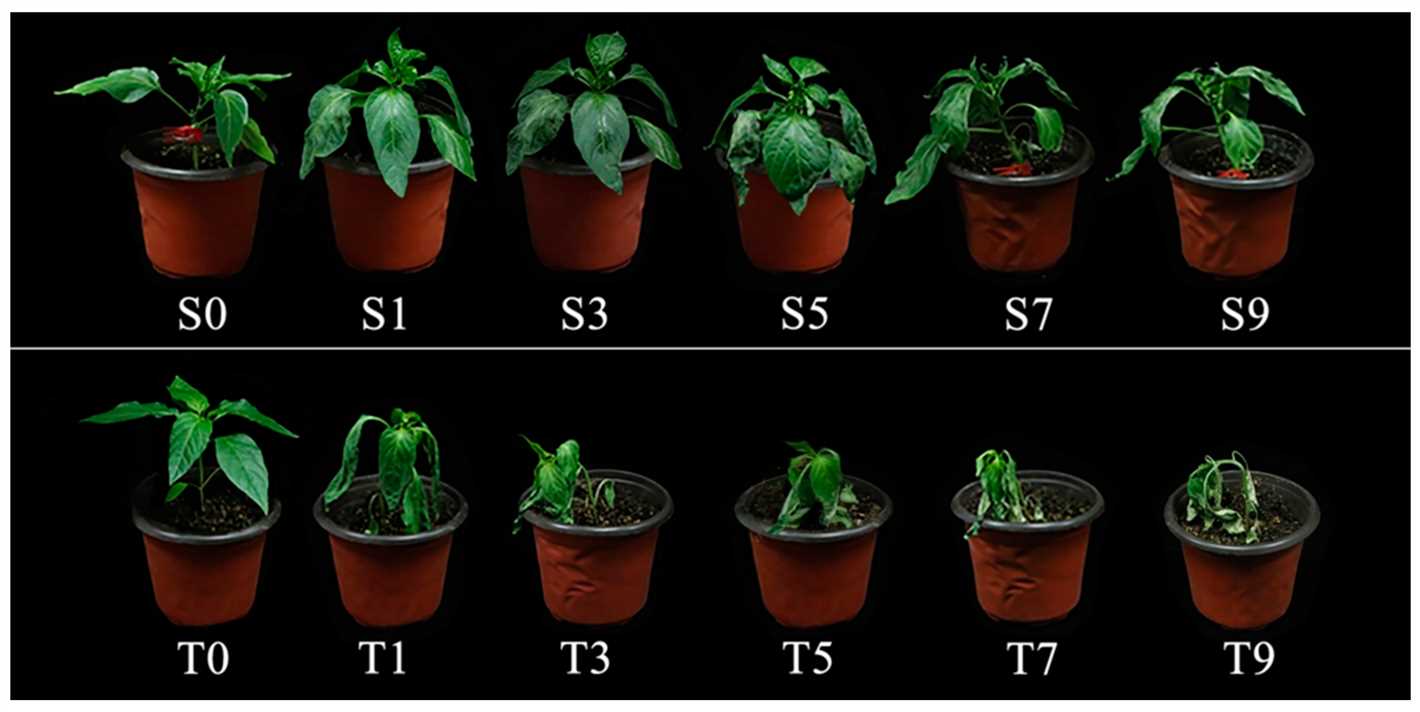
Potassium is essential for overall plant health and helps with the production of sugars and proteins. It also plays a role in disease resistance and stress tolerance. Adequate potassium levels can help seedlings develop strong stems and leaves. Choose a fertilizer that includes potassium to promote the optimal growth of your pepper and aubergine seedlings.
Micronutrients
In addition to the major nutrients mentioned above, seedlings also require various micronutrients for healthy growth. These include elements such as iron, manganese, zinc, and copper. Micronutrient deficiencies can manifest as leaf discoloration or other visible symptoms. To ensure that your seedlings get these micronutrients, you can choose a fertilizer that includes trace elements or supplement with foliar sprays if necessary.
Fertilizer Formulation
When selecting a fertilizer for your pepper and aubergine seedlings, it’s important to consider the nutrient ratios and formulation. Look for a fertilizer that is specifically designed for seedlings and has a balanced N-P-K ratio. The ratio indicates the proportions of nitrogen, phosphorus, and potassium in the fertilizer. A balanced ratio will provide your seedlings with the necessary nutrients for healthy growth and development.
In conclusion, understanding the nutrient needs of your pepper and aubergine seedlings is crucial for their successful growth. By providing them with the right amount of nitrogen, phosphorus, potassium, and micronutrients, you can promote their overall health and ensure that they develop into strong, productive plants.
Organic vs. Synthetic Fertilizers
When it comes to feeding pepper and aubergine seedlings, one important consideration is the choice between organic and synthetic fertilizers. Both types of fertilizers have their advantages and disadvantages, so it’s important to understand the differences before making a decision.
Organic Fertilizers
Organic fertilizers are derived from natural sources, such as plant and animal materials. Common examples of organic fertilizers include compost, manure, and bone meal. Here are some key points to consider when using organic fertilizers:
- Natural and Environmentally Friendly: Organic fertilizers are made from natural materials and are often considered more environmentally friendly than synthetic fertilizers.
- Slow Release of Nutrients: Organic fertilizers release nutrients slowly over time, providing a steady supply of nutrients to seedlings.
- Improved Soil Structure: Organic fertilizers can improve the soil structure, increasing its ability to hold water and nutrients.
- Long-Term Benefits: Organic fertilizers can have long-term benefits for the soil and overall plant health.
- Less Risk of Overfertilization: Organic fertilizers are typically less concentrated than synthetic fertilizers, reducing the risk of overfertilization.
Synthetic Fertilizers
Synthetic fertilizers are chemically manufactured and provide plants with concentrated doses of specific nutrients. Here are some important points to consider when using synthetic fertilizers:
- Immediate Nutrient Availability: Synthetic fertilizers are quickly absorbed by seedlings, providing an immediate supply of nutrients.
- Precision Control: Synthetic fertilizers allow for precise control of nutrient ratios and quantities, which can be important for addressing specific nutrient deficiencies.
- Quick Results: Synthetic fertilizers can rapidly improve plant growth and yield.
- Potential Environmental Impact:Synthetic fertilizers can have a negative environmental impact if not used correctly, as they can leach into water sources and contribute to pollution.
- Risk of Overfertilization: Synthetic fertilizers can be easily overused, leading to nutrient imbalances and potential damage to seedlings.
Choosing the Right Fertilizer
When deciding between organic and synthetic fertilizers for feeding pepper and aubergine seedlings, it’s essential to consider factors such as personal preferences, environmental impact, and the specific needs of the plants. Some gardeners prefer the long-term benefits and natural qualities of organic fertilizers, while others may prefer the immediate and controlled results of synthetic fertilizers. Ultimately, the choice should be based on the individual gardener’s goals and values.
Applying Fertilizer Correctly
Fertilizing pepper and aubergine seedlings is an important step in their growth and development. Here are some tips on how to apply fertilizer correctly to ensure the best results:
1. Choose the right fertilizer
There are various types of fertilizers available, such as organic and synthetic options. It is important to choose a fertilizer that is suitable for pepper and aubergine seedlings. Look for a balanced fertilizer that contains essential nutrients like nitrogen, phosphorus, and potassium.
2. Read the instructions
Before applying any fertilizer, it is important to read and follow the instructions provided by the manufacturer. This will ensure that you apply the correct amount and at the right time.
3. Start with a diluted solution
When applying fertilizer to seedlings, it is best to start with a diluted solution. Mix the fertilizer with water according to the instructions, and then apply it to the seedlings. This will help prevent over-fertilization, which can damage the plants.
4. Apply evenly
When applying fertilizer, make sure to distribute it evenly around the seedlings. This will ensure that each plant receives an equal amount of nutrients and will help promote uniform growth.
5. Avoid direct contact with the stem
Avoid applying fertilizer directly to the stem of the seedlings, as this can cause burning or damage to the plant. Instead, apply the fertilizer a few inches away from the stem.
6. Water after fertilizing
After applying fertilizer to the seedlings, water them thoroughly to help the nutrients penetrate the soil and reach the roots. This will also help prevent any potential fertilizer burn.
7. Follow a feeding schedule
Establish a feeding schedule for your pepper and aubergine seedlings, and stick to it. This will ensure that they receive a consistent supply of nutrients throughout their growth period.
8. Monitor the plants
Keep an eye on the seedlings and monitor their growth and overall health. If you notice any signs of nutrient deficiencies or excess, adjust the fertilizer application accordingly.
9. Keep records
Keep a record of the fertilization schedule and the amount of fertilizer applied to your seedlings. This will help you track their progress and make any necessary adjustments in the future.
By applying fertilizer correctly, you can help ensure that your pepper and aubergine seedlings receive the nutrients they need for healthy and vigorous growth.
Timing and Frequency
Timing is crucial when it comes to feeding pepper and aubergine seedlings. It is important to start fertilizing them at the right stage of growth to ensure they receive the necessary nutrients to develop properly.
Generally, it is recommended to start fertilizing seedlings once they have developed their first true leaves. These are the leaves that appear after the initial cotyledon leaves and are a sign that the plant is starting to grow. At this stage, the seedlings are better equipped to absorb and utilize the nutrients provided by fertilizers.
The frequency of fertilization will depend on the type of fertilizer used and the specific needs of the seedlings. In general, it is best to follow the instructions provided by the fertilizer manufacturer. However, as a general guideline, fertilizing pepper and aubergine seedlings every 2-4 weeks is often sufficient.
It is important not to over-fertilize the seedlings, as this can lead to nutrient imbalances and stunted growth. It is always better to err on the side of caution and apply a little less fertilizer than to risk damaging the seedlings with too much.
Additionally, it is crucial to adjust the frequency of fertilization as the seedlings grow. As they develop and their nutrient requirements increase, it may be necessary to fertilize more frequently to ensure they receive an adequate supply of nutrients.
Proper Application Techniques
Proper application techniques are essential for ensuring the success of fertilization for pepper and aubergine seedlings. By following the correct methods, you can optimize nutrient uptake and promote healthy growth.
1. Start with a Properly Prepared Soil
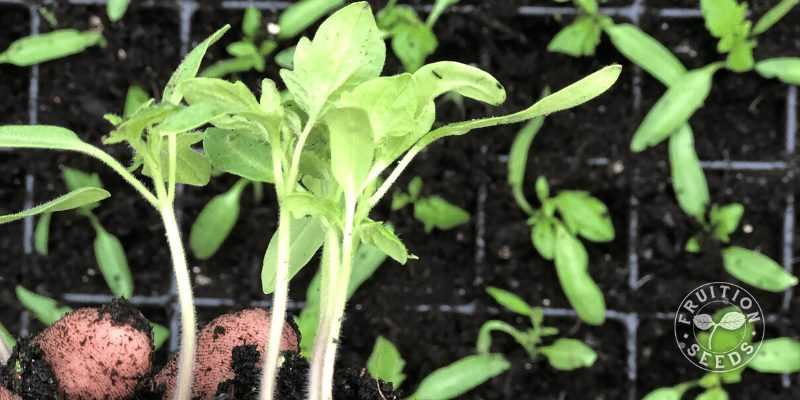
Before applying fertilizers, make sure that the soil is properly prepared. This includes removing any weeds or debris and breaking up clumps of soil. Aerating the soil will help ensure a uniform distribution of nutrients.
2. Use the Right Type of Fertilizer
Choose a fertilizer that is specifically formulated for pepper and aubergine seedlings. Look for a balanced formulation with essential nutrients such as nitrogen, phosphorus, and potassium.
3. Apply Fertilizer in the Right Amount
Follow the recommended application rate provided on the fertilizer packaging. Applying too much fertilizer can lead to nutrient burn, while applying too little may result in nutrient deficiencies.
4. Distribute Fertilizer Evenly
When applying the fertilizer, make sure to distribute it evenly across the soil surface. This can be done by hand or by using a spreader. Uneven distribution can lead to uneven growth and nutrient imbalances.
5. Water the Soil After Application
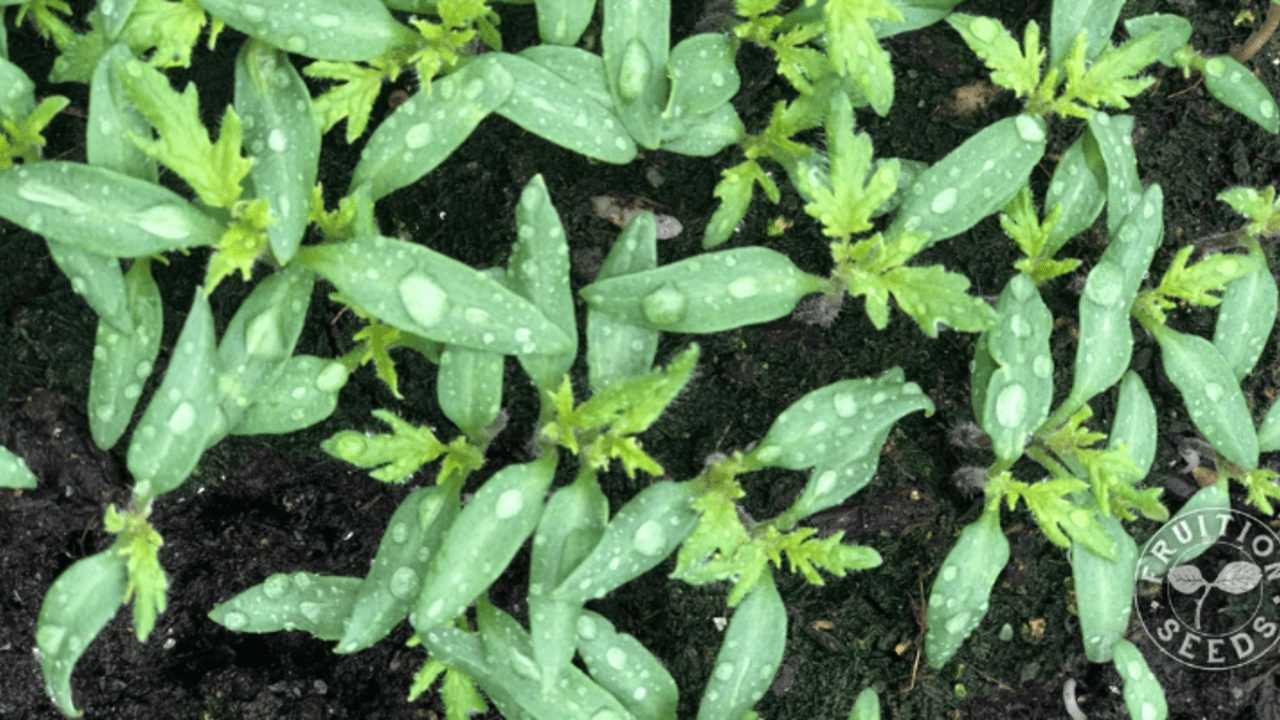
After applying the fertilizer, water the soil thoroughly. This will help dissolve the fertilizer and allow the nutrients to penetrate the soil and reach the roots of the seedlings.
6. Monitor the Seedlings
Keep a close eye on the seedlings after fertilization. Watch for any signs of nutrient deficiencies or excesses, such as yellowing leaves or stunted growth. Adjust the fertilization regimen as needed.
7. Maintain a Regular Fertilization Schedule
Regular fertilization is important for sustaining healthy growth. Follow a fertilization schedule based on the specific needs of your pepper and aubergine seedlings. This may vary depending on the type of fertilizer used and the stage of growth of the seedlings.
By following these proper application techniques, you can ensure that your pepper and aubergine seedlings receive the necessary nutrients for optimal growth and productivity.
Understanding Nutrient Deficiencies
Proper nutrition is crucial for the healthy growth and development of pepper and aubergine seedlings. Nutrient deficiencies can negatively affect the plants’ growth, yield, and overall health. It is important for gardeners to be able to identify the signs of nutrient deficiencies in order to provide the appropriate remedies.
Common Nutrient Deficiencies
1. Nitrogen Deficiency:
- Symptoms: Yellowing of lower leaves, stunted growth, weak stems
- Remedy: Apply a nitrogen-rich fertilizer or use organic sources of nitrogen such as compost or well-rotted manure.
2. Phosphorus Deficiency:
- Symptoms: Purplish leaves, slow growth, poor fruit development
- Remedy: Apply a phosphorus-rich fertilizer or use organic sources of phosphorus such as bone meal or fish meal.
3. Potassium Deficiency:
- Symptoms: Yellowing and browning of leaf edges, weak stems
- Remedy: Apply a potassium-rich fertilizer or use organic sources of potassium such as wood ash or kelp meal.
4. Calcium Deficiency:
- Symptoms: Blossom end rot (black, sunken spots on fruits), deformed leaves
- Remedy: Amend soil with calcium-rich products such as limestone or gypsum.
5. Magnesium Deficiency:
- Symptoms: Yellowing between leaf veins, stunted growth
- Remedy: Apply a magnesium-rich fertilizer or use organic sources of magnesium such as Epsom salt.
Diagnosing Nutrient Deficiencies
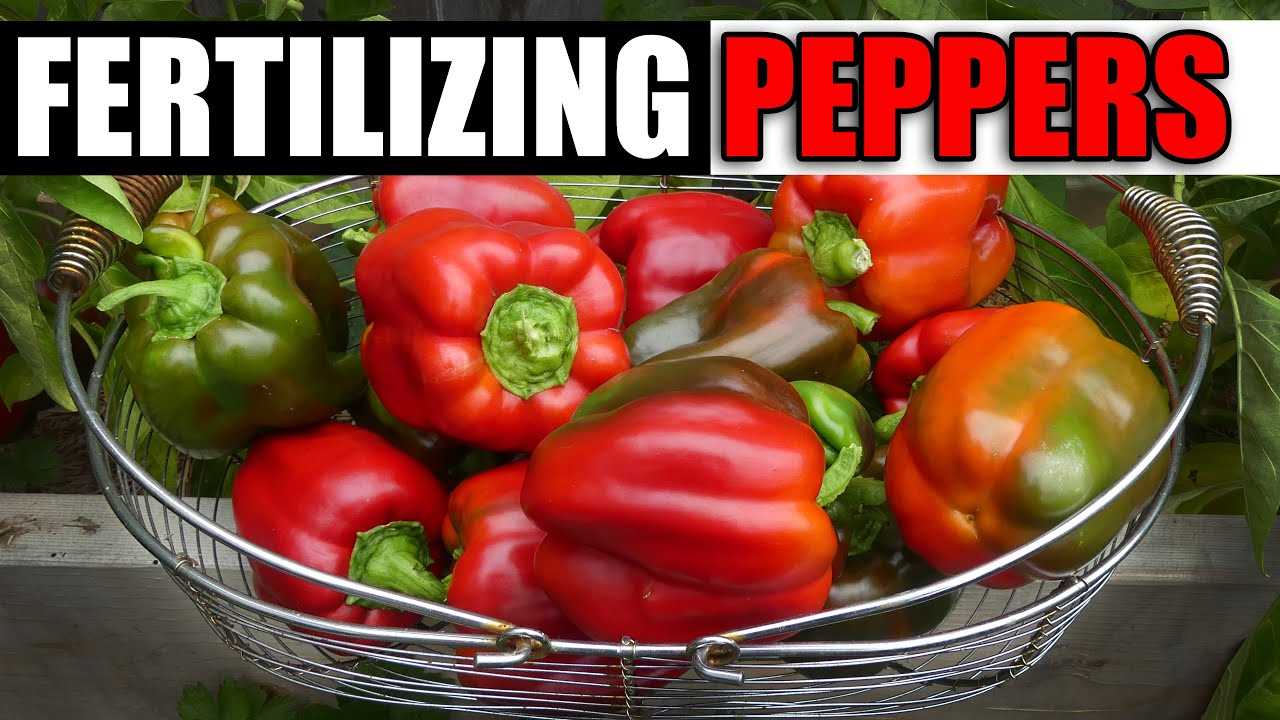
When observing signs of nutrient deficiencies in pepper and aubergine seedlings, it is important to consider other factors that may contribute to the symptoms. These include pH imbalance, lack of sunlight, pest infestation, and root damage.
For a more accurate diagnosis, it is recommended to conduct a soil test to determine the nutrient levels and pH of the soil. This will help identify any deficiencies or imbalances that may be affecting the plants.
Preventing and Treating Nutrient Deficiencies
The best way to prevent nutrient deficiencies is to maintain a healthy growing environment and provide a balanced fertilization program. This includes regularly checking the pH level of the soil, ensuring adequate sunlight exposure, and applying fertilizers according to the specific needs of the plants.
If nutrient deficiencies are present, they can be treated through the application of appropriate fertilizers or organic amendments. It is important to follow the recommended dosage and application methods specified on the product labels.
In conclusion, understanding nutrient deficiencies and their symptoms is crucial for the successful growth of pepper and aubergine seedlings. By providing the necessary nutrients and maintaining a balanced growing environment, gardeners can ensure healthy and productive plants.
Identifying Common Symptoms
When caring for pepper and aubergine seedlings, it is important to be able to identify common symptoms of nutrient deficiencies or imbalances. By recognizing these symptoms early on, you can take the necessary steps to address the issue and ensure healthy plant growth.
1. Yellowing Leaves
Yellowing leaves, especially on the lower parts of the plant, can indicate a nitrogen deficiency. Nitrogen is an essential nutrient for plant growth and is responsible for strong and vibrant leaf color. To fix this issue, you can apply a nitrogen-rich fertilizer or use organic materials such as compost or manure.
2. Stunted Growth
If your seedlings are not growing as expected and their development seems stunted, it could be due to a lack of phosphorus. Phosphorus is crucial for root development and overall plant growth. To remedy this problem, you can use a phosphorus-rich fertilizer or add bone meal to the soil before planting.
3. Small Fruits or Blossom Drop
If your pepper or aubergine plants are producing small fruits or dropping their blossoms before they can develop into fruits, it may indicate a potassium deficiency. Potassium is essential for fruit formation and overall plant health. You can address this by using a fertilizer high in potassium or adding wood ash to the soil.
4. Brown or Spotted Leaves
Brown or spotted leaves can be a sign of various issues, including fungal diseases, pest infestation, or insufficient water uptake. It is important to inspect your plants closely and address any underlying problems. Using appropriate fungicides or pest control methods, ensuring proper watering, and maintaining good plant hygiene can help prevent and fix these issues.
5. Wilting or Drooping Leaves
Wilting or drooping leaves can be a sign of underwatering or overwatering. Both of these conditions can lead to stress and poor plant health. Make sure to monitor the moisture levels in the soil and adjust your watering practices accordingly. It is essential to provide the right amount of water to keep the soil evenly moist but not waterlogged.
By being observant of these common symptoms and taking the necessary actions, you can ensure that your pepper and aubergine seedlings receive the proper care and nutrition they need for healthy growth.
Addressing Nutrient Imbalances
Having a proper balance of nutrients is crucial for the healthy growth of pepper and aubergine seedlings. Imbalances in nutrient levels can lead to deficiencies or toxicities, both of which can negatively affect plant growth and development. Here are some common nutrient imbalances and how to address them:
1. Nitrogen (N) Deficiency
A lack of nitrogen can result in stunted growth and yellowing of leaves. To address this imbalance, you can apply a nitrogen-rich fertilizer, such as blood meal or fish emulsion, according to the manufacturer’s instructions. Additionally, adding organic matter, like compost, can help improve nitrogen levels in the soil.
2. Phosphorus (P) Deficiency
Phosphorus deficiency can lead to poor root development and delayed flowering. To address this, you can apply a phosphorus-rich fertilizer, such as bone meal or rock phosphate. Follow the instructions on the product packaging for application rates and frequency.
3. Potassium (K) Deficiency
A lack of potassium can cause weak stems, poor fruit development, and yellowing of leaves. To address this, use a potassium-rich fertilizer, such as wood ash or potassium sulfate. Be cautious not to overapply potassium, as it can interfere with the uptake of other nutrients.
4. Calcium (Ca) Deficiency
Calcium deficiency can lead to blossom end rot, a condition where the bottoms of fruits develop dark, sunken spots. To address this, you can add calcium to the soil using gypsum or crushed eggshells. It’s essential to maintain proper pH levels, as calcium availability is affected by soil acidity.
5. Magnesium (Mg) Deficiency
Magnesium deficiency can cause yellowing between leaf veins and reduced fruit yield. To address this, you can apply magnesium sulfate (Epsom salt) or foliar spray with a magnesium-rich solution. However, it’s crucial not to overapply magnesium, as it can impact the uptake of other nutrients like calcium and potassium.
6. Iron (Fe) Deficiency
Iron deficiency can result in yellowing of leaves with green veins. To address this, you can apply chelated iron or iron sulfate to the soil. It’s important to note that iron availability is affected by soil pH, so maintaining proper pH levels is essential for iron uptake.
7. Micronutrient Imbalance
In addition to the macronutrients mentioned above, pepper and aubergine seedlings also require various micronutrients like zinc, manganese, copper, and boron in small quantities. If you notice symptoms of micronutrient deficiencies, such as distorted growth or mottled leaves, you can apply micronutrient fertilizers or foliar sprays specifically formulated for vegetable plants.
Regular soil testing can help identify nutrient imbalances and guide you in applying the correct fertilizers. It’s important to follow the product instructions and maintain a balanced approach when addressing nutrient imbalances to ensure healthy growth and productivity of pepper and aubergine seedlings.
“Question-Answer”
How often should I fertilize pepper and aubergine seedlings?
It is recommended to fertilize pepper and aubergine seedlings once a week to provide them with essential nutrients for healthy growth.
What type of fertilizer is best for pepper and aubergine seedlings?
Pepper and aubergine seedlings thrive when given a balanced fertilizer with equal ratios of nitrogen, phosphorus, and potassium. Look for a fertilizer labeled as “complete” or “balanced” to ensure all nutrients are provided.
Can I use organic fertilizer for pepper and aubergine seedlings?
Absolutely! Organic fertilizers are a great option for feeding pepper and aubergine seedlings. Look for organic fertilizers that are specifically formulated for vegetables to ensure they have the necessary nutrients.
Should I apply foliar feeding to pepper and aubergine seedlings?
Foliar feeding can be a beneficial technique for pepper and aubergine seedlings. By spraying a liquid fertilizer onto the leaves, the plants can quickly absorb the nutrients. However, it is important to use a diluted solution and avoid excessive spraying, as this can lead to leaf burn.
What signs should I look for to know if my seedlings need fertilizer?
If the leaves of your pepper and aubergine seedlings start to turn yellow or develop stunted growth, it is a sign that they may be lacking nutrients and need fertilizer. Regularly monitoring the plants’ appearance will help identify any deficiencies.
Are there any specific watering requirements for fertilized seedlings?
When fertilizing pepper and aubergine seedlings, it is important to maintain consistent moisture in the soil. Avoid overwatering, as this can lead to root rot, but also make sure the plants are not drying out. The soil should be kept evenly moist, but not waterlogged.
Can I create my own homemade fertilizer for pepper and aubergine seedlings?
Yes, homemade fertilizers can be an effective and cost-saving option for feeding pepper and aubergine seedlings. Compost, worm castings, and diluted manure teas are commonly used as homemade fertilizers. However, it’s important to research and follow proper guidelines for homemade fertilizers to ensure they provide the necessary nutrients in the correct ratios.







